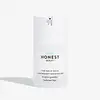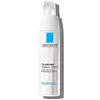What's inside
What's inside
 Key Ingredients
Key Ingredients

 Benefits
Benefits

 Concerns
Concerns

 Ingredients Side-by-side
Ingredients Side-by-side

Water
Skin ConditioningCaprylic/Capric Triglyceride
MaskingNeopentyl Glycol Diethylhexanoate
EmollientPolyglyceryl-2 Stearate
EmulsifyingCetearyl Alcohol
EmollientPropanediol
SolventCetyl Alcohol
EmollientGlycerin
HumectantPhytosterols
Skin ConditioningPhospholipids
Skin ConditioningHydrolyzed Sodium Hyaluronate
Skin ConditioningTrisodium Ethylenediamine Disuccinate
Sclerotium Gum
Emulsion StabilisingHydroxyacetophenone
AntioxidantAllantoin
Skin ConditioningLinoleic Acid
CleansingJojoba Esters
EmollientTocopherol
AntioxidantCetearyl Phosphate
Skin ConditioningSodium Hydroxide
Buffering1,2-Hexanediol
Skin ConditioningCaprylyl Glycol
EmollientCitric Acid
BufferingWater, Caprylic/Capric Triglyceride, Neopentyl Glycol Diethylhexanoate, Polyglyceryl-2 Stearate, Cetearyl Alcohol, Propanediol, Cetyl Alcohol, Glycerin, Phytosterols, Phospholipids, Hydrolyzed Sodium Hyaluronate, Trisodium Ethylenediamine Disuccinate, Sclerotium Gum, Hydroxyacetophenone, Allantoin, Linoleic Acid, Jojoba Esters, Tocopherol, Cetearyl Phosphate, Sodium Hydroxide, 1,2-Hexanediol, Caprylyl Glycol, Citric Acid
Water
Skin ConditioningIsocetyl Stearate
EmollientSqualane
EmollientButyrospermum Parkii Butter
Skin ConditioningDimethicone
EmollientGlycerin
HumectantZea Mays Starch
AbsorbentPentylene Glycol
Skin ConditioningButylene Glycol
HumectantGlyceryl Stearate
EmollientPEG-100 Stearate
Cetyl Alcohol
EmollientSalvia Miltiorrhiza Root Extract
Skin ConditioningDimethiconol
EmollientSodium Hydroxide
BufferingSphingomonas Ferment Extract
Skin ConditioningCaprylyl Glycol
EmollientCitric Acid
BufferingAcetyl Dipeptide-1 Cetyl Ester
Skin ConditioningAcrylates/C10-30 Alkyl Acrylate Crosspolymer
Emulsion StabilisingWater, Isocetyl Stearate, Squalane, Butyrospermum Parkii Butter, Dimethicone, Glycerin, Zea Mays Starch, Pentylene Glycol, Butylene Glycol, Glyceryl Stearate, PEG-100 Stearate, Cetyl Alcohol, Salvia Miltiorrhiza Root Extract, Dimethiconol, Sodium Hydroxide, Sphingomonas Ferment Extract, Caprylyl Glycol, Citric Acid, Acetyl Dipeptide-1 Cetyl Ester, Acrylates/C10-30 Alkyl Acrylate Crosspolymer
 Reviews
Reviews

Ingredients Explained
These ingredients are found in both products.
Ingredients higher up in an ingredient list are typically present in a larger amount.
Caprylyl Glycol is a humectant and emollient, meaning it attracts and preserves moisture.
It is a common ingredient in many products, especially those designed to hydrate skin. The primary benefits are retaining moisture, skin softening, and promoting a healthy skin barrier.
Though Caprylyl Glycol is an alcohol derived from fatty acids, it is not the kind that can dry out skin.
This ingredient is also used as a preservative to extend the life of products. It has slight antimicrobial properties.
Learn more about Caprylyl GlycolCetyl Alcohol is a fatty alcohol. Fatty Alcohols are most often used as an emollient or to thicken a product.
Its main roles are:
Though it has "alcohol" in the name, it is not related to denatured alcohol or ethyl alcohol.
The FDA allows products labeled "alcohol-free" to have fatty alcohols.
Learn more about Cetyl AlcoholCitric Acid is an alpha hydroxy acid (AHA) naturally found in citrus fruits like oranges, lemons, and limes.
Like other AHAs, citric acid can exfoliate skin by breaking down the bonds that hold dead skin cells together. This helps reveal smoother and brighter skin underneath.
However, this exfoliating effect only happens at high concentrations (20%) which can be hard to find in cosmetic products.
Due to this, citric acid is usually included in small amounts as a pH adjuster. This helps keep products slightly more acidic and compatible with skin's natural pH.
In skincare formulas, citric acid can:
While it can provide some skin benefits, research shows lactic acid and glycolic acid are generally more effective and less irritating exfoliants.
Most citric acid used in skincare today is made by fermenting sugars (usually from molasses). This synthetic version is identical to the natural citrus form but easier to stabilize and use in formulations.
Read more about some other popular AHA's here:
Learn more about Citric AcidGlycerin is already naturally found in your skin. It helps moisturize and protect your skin.
A study from 2016 found glycerin to be more effective as a humectant than AHAs and hyaluronic acid.
As a humectant, it helps the skin stay hydrated by pulling moisture to your skin. The low molecular weight of glycerin allows it to pull moisture into the deeper layers of your skin.
Hydrated skin improves your skin barrier; Your skin barrier helps protect against irritants and bacteria.
Glycerin has also been found to have antimicrobial and antiviral properties. Due to these properties, glycerin is often used in wound and burn treatments.
In cosmetics, glycerin is usually derived from plants such as soybean or palm. However, it can also be sourced from animals, such as tallow or animal fat.
This ingredient is organic, colorless, odorless, and non-toxic.
Glycerin is the name for this ingredient in American English. British English uses Glycerol/Glycerine.
Learn more about GlycerinSodium Hydroxide is also known as lye or caustic soda. It is used to adjust the pH of products; many ingredients require a specific pH to be effective.
In small amounts, sodium hydroxide is considered safe to use. However, large amounts may cause chemical burns due to its high alkaline.
Your skin has a natural pH and acid mantle. This acid mantle helps prevent harmful bacteria from breaking through. The acid mantle also helps keep your skin hydrated.
"Alkaline" refers to a high pH level. A low pH level would be considered acidic.
Learn more about Sodium HydroxideWater. It's the most common cosmetic ingredient of all. You'll usually see it at the top of ingredient lists, meaning that it makes up the largest part of the product.
So why is it so popular? Water most often acts as a solvent - this means that it helps dissolve other ingredients into the formulation.
You'll also recognize water as that liquid we all need to stay alive. If you see this, drink a glass of water. Stay hydrated!
Learn more about Water